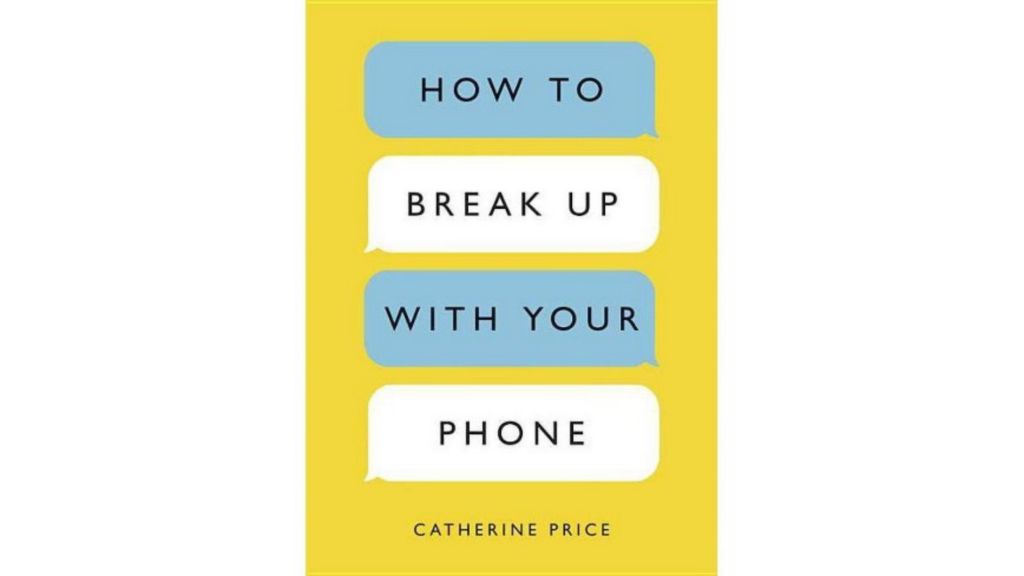One day, in early December, I realized that I had been scrolling on my phone for a couple of hours. And that that was normal behavior for me. And I didn’t like that very much. My scanner personality means that I have…many…hobbies, and time spent on my phone is time not spent on hobbies. So I did what I always do when I want to make a change in my life: I googled what to do. And I found the book How to Break Up with Your Phone.
The Philosophy Behind How to Break Up with Your Phone
Catherine Price, a science journalist, set out to figure out why we spend so much time on our phones, what that does to our brains, and how to reset our relationship with our phone. She calls it a breakup and NOT quitting – because your phone is useful, just usually over-used.
I think what I appreciated about this book the most was its non-judgmental tone. Price has no desire to shut you off from your phone. After all, it’s an incredibly powerful tool, chock full of uses. But it’s also a dopamine addiction pit that is designed to never let you go.
Part 1: Why you should break up with your phone
In the first half of the book, Price does a great job of summarizing the available science about the impact that phones have on our brains. I can’t say I was surprised by anything that she shared. In fact, I would say that it confirmed some suspicions that I have. I won’t summarize all the information that Price gathered (and there’s quite a bit of it), but there are two points I want to highlight.
The Dopamine Cycle
So I’ve talked about dopamine on here before. It’s the motivation chemical, and it’s a pretty powerful force, when you know how to manage it. When you do something with an enjoyable outcome (like, say, winning a round of solitaire on your phone), your brain begins to associate that behavior with the reward. After time, simply anticipating the behavior will begin releasing dopamine. So the more of an action you take, the more of an action you will take, all in the pursuit of dopamine.
Now, smartphone apps have been built to exploit this dopamine cycle, and there aren’t any stopping cues built in. In fact, advertising juggernauts like Facebook have learned how to delay the dopamine-triggering events on our phones, such as getting likes on social media, until the point when people are juuuuust about to put their phone down. Then, they drop the likes on you. Dopamine is triggered, and your brain wants to keep going, in hopes of getting more dopamine.
In essence, our phones work like slot machines, complete with the fun colors and flashing lights.
The Effect on Our Brains
Fun fact: our brains are masters at adapting. That’s why we as a species have survived as long as we have (well, that, learning to cook meat, and the invention of modern sanitation practices). But our thoughts impact the structure of our brains. Whatever functions we are most likely to use, our brains prioritize maintaining. You either use it or you lose it.
London cab drivers famously have to pass a test to get their license. They have to memorize every single street in the complicated warren that is London. And they do it! Then, since they’re using the information daily in their work, they keep that information fresh. And studies have shown that their brains have prioritized that information, because by using it all the time, they’re brains deem it important to survival.
Now, how much time do you spend on your phone? For me, it was 4-6 hours per day when I started this process. Which made me think: what is my brain adapting to? In Price’s words, “an intensely focused state of distraction.” I spent those hours in the hunt for dopamine. And that’s why I tried out the second part of her book.
Part Two: The Break Up
Price built a whole 30-day process to break up with your phone. She based the system off mindfulness techniques to help them stick. I’m a couple weeks out from the end of my 30 days, and I’m pretty happy with some of the shifts in behavior that I’ve been able to make habits.
Week 1: Pay attention to your habits
For the first week, she gives you short, daily exercises to help you notice what your phone habits are. And they’re different for everyone. Zack found that he picks up his phone whenever he has to wait for anything. I pick mine up whenever I finish one thing and am trying to figure out what I should do next.
What’s important about this week is that you don’t judge what you do or try and change it. You’re just finding ways to jolt yourself out of your own head and notice.
Week 2: Start making changes to your habits
Ok, now you can start changing your habits. A habit has three components: cue, response, and reward. This week is all about starting to disrupt the cues you noticed in Week 1. It’s also about noticing which cues you can’t disrupt. For example, she recommends you turn off all notifications except for the phone ringing. But if you use your phone for work, you might have to leave those on. Price has recommendations for how to work around that.
My favorite part of this week was the day when you completely rearrange your apps. I’m usually good about keeping just two pages of apps on my phone, but this day reduced it to five apps and five folders of apps on my phone. It’s amazing how simply changing where an app is disrupted my distraction routine.
Week 3: Reclaim your brain
There is a lot of research about how the average attention span has shortened dramatically in the past couple decades. This week is full of exercises to help bring that attention back. It culminates in the preparation for and execution of a 24-hour screen fast. No phones, laptops, or TV.
Honestly, we weren’t great about keeping up with week 3. We skipped a lot of the attention span-lengthening activities. Perhaps I’ll go back and revisit them sometime. But we didn’t skip the 24 hours without screens. I highly recommend that.
Week 4: Rebuild the relationship
Ok, now you’ve gone 24 hours without ANY screens. Now is the time to bring screens back into your life – intentionally. This week is full of reflection activities and suggestions for how to maintain your new relationship with your phone.
My favorite part of this week was when we went back and read a note we wrote to ourselves at the beginning, describing what success would look like. It made me realize how easy it is to make room in my life for phone time, even if that’s not what I want to spend my time on.
How I Feel About How to Break Up with Your Phone
Ultimately, I really enjoyed working through this book. I’ve cut my phone time in half, but I don’t think that’s the real win here. Price is so clear that the goal is not to stop using your phone entirely. The goal is to use your phone the way you want to be using your phone. Personally, I want to use my phone to keep in touch with my loved ones who live far away, and it does pretty well at that.
But I’m probably most excited to continue with monthly check-ins with my phone. It’s only been a couple weeks, but I’m already slipping back into slack-jawed scrolling. Luckily, I’m armed with techniques to save myself from the scrolling!




